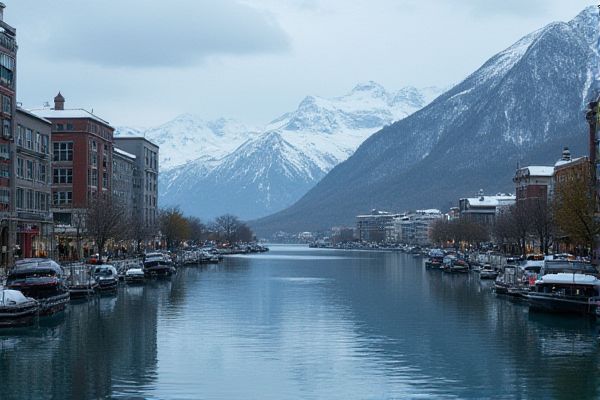
Cost of living in Alaska: High utility expenses. Grocery prices above average. Costly housing market. Limited public transportation options. Remote location premium. Expense of winter gear. Variable healthcare costs. Higher taxes. Limited dining options. Seasonal job market fluctuations.
High utility expenses
In Alaska, utility expenses are significantly higher than the national average, with natural gas and electricity bills being 33% higher, and average monthly utility bills ranging from $240 to $270 in Anchorage, largely due to the harsh weather conditions and high energy needs. For more detailed insights on living costs in Alaska, visit the True Cost of Living in Alaska page on SmartAsset's website.
Grocery prices above average
Grocery prices in Rural Alaska are significantly higher than the national average due to the high cost of transporting goods, with items like milk costing $18.29 and cheese priced at $24.99. This situation highlights the substantial difference in costs between rural areas and cities like Anchorage. For more information on this topic, you can visit the Fox Business website for further details. The disparity underscores the economic challenges faced by residents in these remote communities.
Costly housing market
The cost of living in Alaska is significantly impacted by a costly housing market, characterized by a median list price of $425,000 and an average price per square foot of $238. This positions Alaska as one of the more expensive states for housing in the US. Additionally, median home values hover around $385,000, while rental prices for a one-bedroom apartment average $962 per month, further contributing to the overall high cost of living. The Alaska Housing Market also reflects a median home price of $389,000, which has increased by 10.3% from the previous year. Homes typically sell after 28 days on the market, underscoring a seller's market with rising housing costs.
Limited public transportation options
Living in Alaska is challenging due to limited public transportation options, with many areas relying on expensive air travel or ferries. However, cities like Juneau and Anchorage offer more accessible and relatively low-cost public transit services. For more detailed insights on this, you can visit the CityMoving Blog, which provides comprehensive information about living expenses and transportation in Alaska.
Remote location premium
The high cost of living in Alaska is significantly influenced by its remote location, leading to increased costs for food, fuel, and other essentials due to the long distances goods must be transported. This logistical challenge means that residents in rural areas often face grocery prices up to 53% more expensive than the national average. For more detailed insights into these Economic Trends, Alaska's unique geographical conditions continue to play a critical role in its economic landscape.
Expense of winter gear
The expense of winter gear in Alaska is significant, with military members highlighting the necessity for costly items such as coats, jackets, gloves, and snow tires to cope with the harsh winter conditions. These essential items are not reflected in recent reductions to the Overseas Cost of Living Allowance, which poses challenges for those stationed in this demanding environment.
Variable healthcare costs
Healthcare costs in Alaska are significantly higher than the national average, with hospital and physician services costing 50% and 80% more, respectively. Medicaid expenditures are also 56% higher than the national average, largely due to higher Medicaid payments to physicians compared to Medicare rates. For more detailed insights into these disparities, you can refer to the Alaska Policy Forum which provides an in-depth analysis of healthcare costs in the region.
Higher taxes
Alaska residents enjoy one of the lowest tax burdens in the United States, with only approximately 4.6 percent of their income going to state and local taxes. Although there is no statewide sales tax or state income tax, certain locales may impose local sales taxes of up to 7.5 percent. Despite the absence of state income tax, the high cost of living in Alaska necessitates higher incomes to sustain a lifestyle similar to that in other states. This higher income threshold results in a heftier federal income tax burden for Alaskan residents, effectively translating to an additional 5 to 6 percent income tax for married couples.
Limited dining options
In Alaska, particularly in rural areas, dining options are limited due to the state's remote location and lack of public transportation. Many historic roadhouses have closed or operate on limited schedules, and the availability of fresh produce and diverse dining choices is severely restricted. For more on this fascinating subject, check out the article on Grub, Gold, and Rush Ghosts which provides a detailed look into the region's culinary challenges and history.
Seasonal job market fluctuations
The cost of living in Alaska is high, particularly affected by seasonal job market fluctuations, where housing, food, and gas costs are elevated. Workers must adjust to higher expenses during the short but busy summer season when most seasonal jobs are available. To learn more about the intricacies of the seasonal job market in Alaska, visit the Alaska.org Blog.
